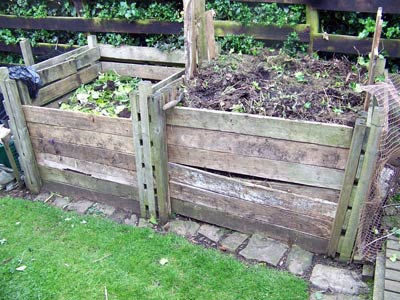Help Improving Your Soil
Every gardener wants to have better plants and flowers, but, sometimes we just need to get to the root of the matter so to speak. There is nothing more satisfying than a deep rich loamy soil. Unfortunately, unless you are very luck, you are unlikely to inherit such a soil. Nevertheless it is definitely worth investing the time and energy to improve your soil. Over time looking after your soil will pay dividends.
What is Good Soil?
- Free draining, yet holds a fair amount of moisture.
- Good balance of minerals and food.
- Light, rich texture, should crumble in your hands.
- Good soil in the right place and suitable for the items you wish to grow.
Keys to Improving Imperfect Soil
- Water and nutrients are the key to helpful soil.
- A soggy mess is not the same as a hydroponic growing medium. Add gravel to improve baddly drained soil. Create a soak away if necessary
- Add organic matter to help retain moisture and make nutrients available for long enough for the plants to benefit.
- Soil needs to be the ‘safe home for plants so depth for roots, air for health and pathogen free soil is a requirement.
These are some more Tips.
Identify your soil. If you have a heavy clay soil, the main task will be to add more organic matter and sand to help.
Ph Test. If you are growing specialist plants like Rhododendrons, it is especially important to test your soils ph. If your soil is alkaline (high ph) acid loving plants will not thrive their. You will either have to lower the ph of the soil or choose different plants. See: Soil Acidity improvers
Compost Bins.

A compost bin can be seen as the heart of the garden. It recycles old plant material creating a wonderful rich compost to be spread on the garden. Ideally, you should have at least 2 bins, so one can be decomposing whilst you add to another. See more tips on making compost here.
Spread the rotted compost over the soil. You don’t need to pile it high, spread thinly for maximum effect. A light hoeing into the soil is sufficient.
Buy Well rotted manure.
If you inherit a really poor soil, it will take too long relying on your own compost. Start off with a big one off purchase of top soil or well rotted manure. It is cheaper and more efficient buying in bulk than doing little and often.

Courgettes will benefit from good, rich soil
Leaf Mould.
Leaf mould is another good soil improver. It is not particularly rich in nutrients but, is a good source of organic matter. If it is only partly decomposed just lightly dig below surface, worms will take care of the final decomposition.
Crop Rotation.
It might be an old technique but it is still worth employing for garden. Legumes help to put nitrogen back into soil and so are followed by nitrogen feeders like Brasicas. Crop rotation doesn’t have to be restricted to vegetables. Trying growing sweet peas in different locations.
Mulch.
A good mulch in early spring can help prevent soil getting scorched and drying out.
To Dig of Not To Dig?
Many people feel that soil improvement requires many hours of back breaking digging. But, does nature do double digging?
It is fine to put well rotted compost on surface as a mulch and allow nutrients to break down. If it is half decomposed, a light hoeing to mix with surface is good for cosmetic purposes.
If you already have a very rich organic soil, then there will be little benefit from adding lots of organic matter.
Related
2 thoughts on “Help Improving Your Soil”
Comments are closed.